What’s the proper height adjustment for your row cleaners? Tune in to find out! We will go over three scenarios: no-till, reduced till and conventional till. #AskTheAgronomist
https://www.facebook.com/LathamSeeds/videos/347855382746136?sfns=mo
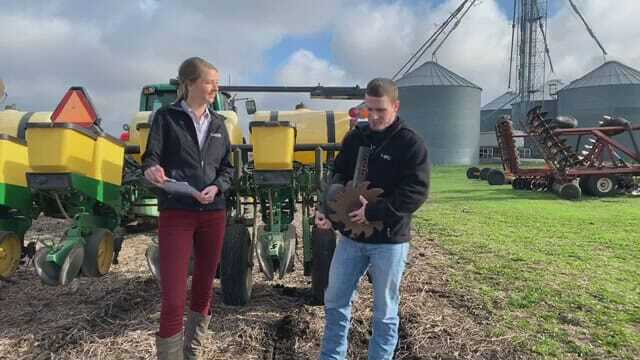
What’s the proper height adjustment for your row cleaners? Tune in to find out! We will go over three scenarios: no-till, reduced till and conventional till. #AskTheAgronomist
https://www.facebook.com/LathamSeeds/videos/347855382746136?sfns=mo
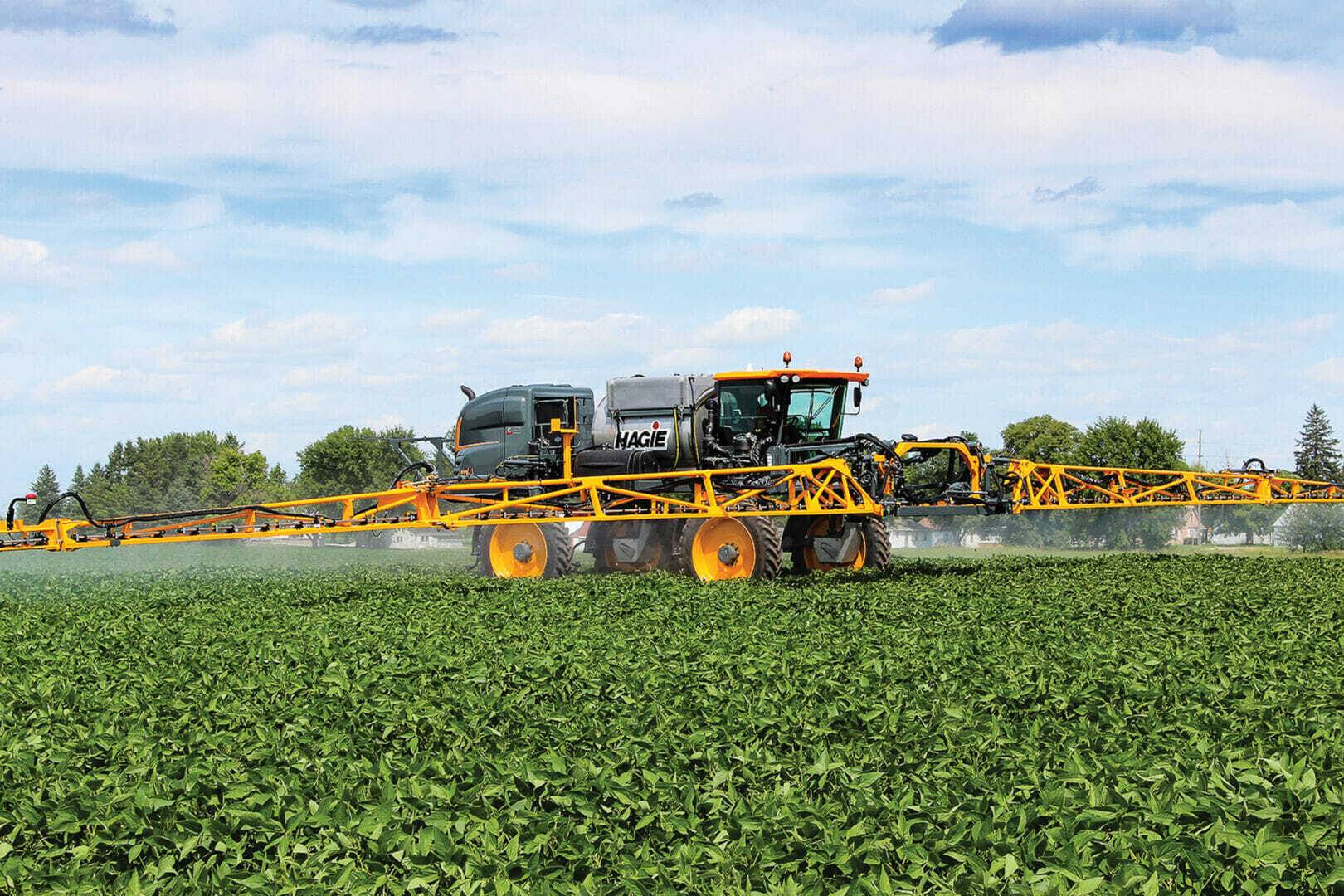
In 2018, the EPA extended the registration for over-the-top use of select dicamba products to control weeds in soybean and cotton fields that are genetically engineered to resist dicamba. This registration included label updates which add certain measures to further minimize the potential of off-target damage. This registration will automatically expire on December 20, 2020, unless the EPA extends it further. Listed below are some of the FEDERAL updates now in effect:
Minnesota: Must not apply dicamba herbicides after June 20th. There will be no temperature restriction for 2019.
North Dakota: Must not apply dicamba after June 30th. Keeping records of dicamba applications is required and will be strictly enforced.
South Dakota: Must not apply dicamba after June 30th, 45 days after planting or the R1 (beginning bloom) stage of soybeans, whichever comes first. Applicators must also pass a short exam after training is completed.
Illinois: Must not apply dicamba after June 30th. Do not apply when the wind is blowing toward adjacent residential areas. Before spraying, the applicator must consult the FieldWatch sensitive crop registry. Further restrictions apply when spraying near the downfield edge of any Illinois Nature Preserves Commission Site.
These are just some of the new requirements for the application of dicamba over-the-top of soybeans in 2019. There may be additional restrictions from the states not mentioned above or from local authorities. If you will be applying any of the dicamba products in 2019, make certain you attend the required ANNUAL training and conform to what the label requires. Please make these restrictions a high priority so we can continue to use this valuable tool in the fight against weed resistance!
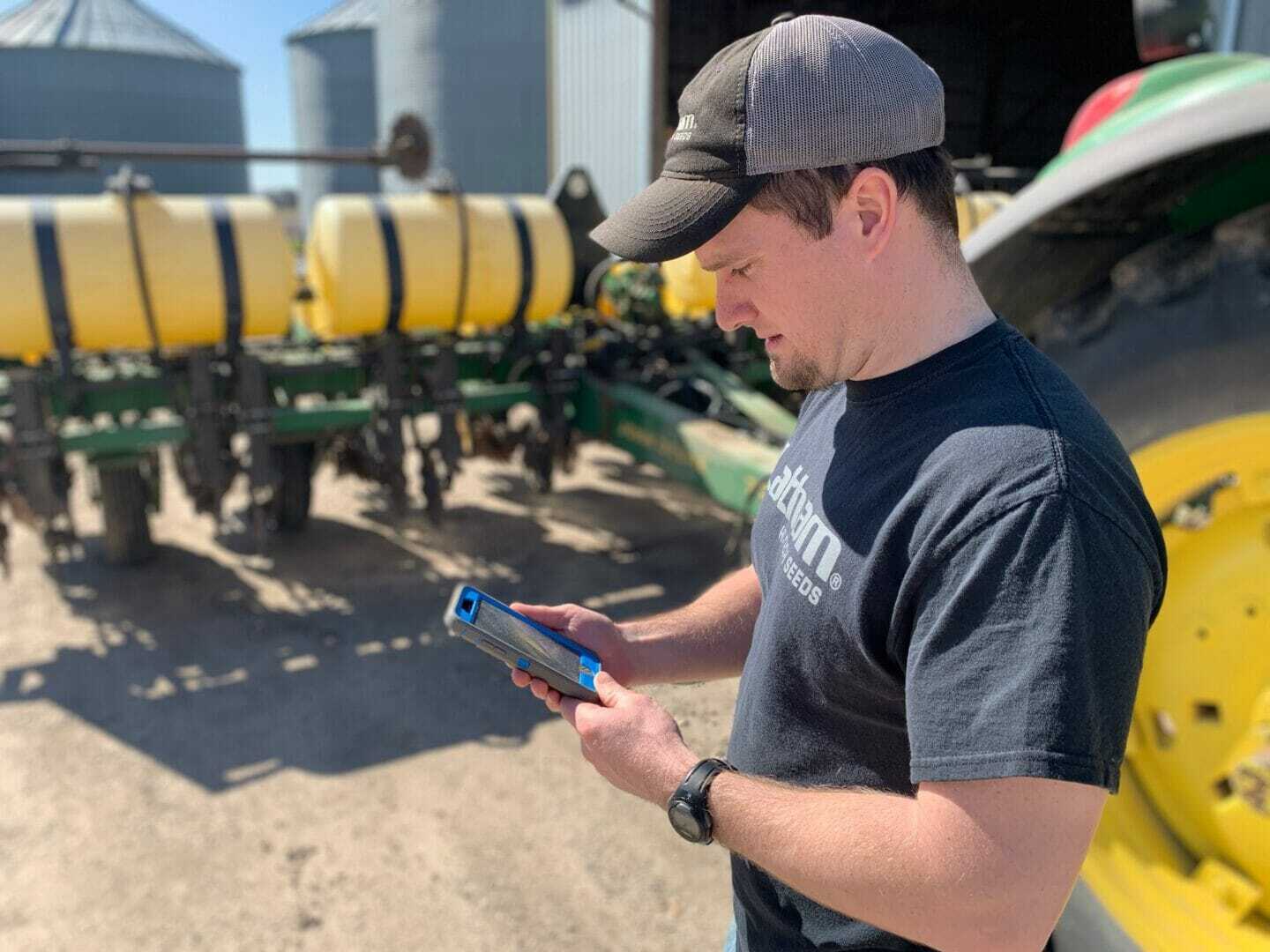
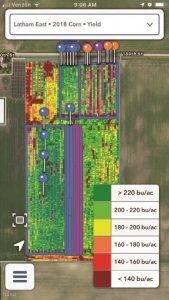 Viewing equipment in real time offers benefits like knowing how close an operator is to finishing a field, and this feature just got easier thanks to technology. Climate FieldView has released a cab app for iPhones that will help farmers coordinate filling planters in the spring and semis during harvest.
Viewing equipment in real time offers benefits like knowing how close an operator is to finishing a field, and this feature just got easier thanks to technology. Climate FieldView has released a cab app for iPhones that will help farmers coordinate filling planters in the spring and semis during harvest.
The opening map screen on the phone app is an interactive weather radar. From the menu, “remote view in” to another account. You will quickly see which field operations are underway in real time.
This new app also allows you to pull up reports that you can print or send. For example, you could send a planting summary to a landlord as soon as you finish planting the field. Simply pull up the “Field Planting Summary” PDF file and email this file from the tractor cab. You also may view reports “by hybrid” to see how many acres of each hybrid you have in the ground and at what population. If you’re running more than one planter, you can view reports “by planter.”
Another feature of the iPhone Cab App (and on the iPad version) is the ability to “log out” of the app and into another account, so you can toggle between accounts to log data. This feature may be especially useful for growers who have more than one Climate account or who custom farm ground for farmers who also use Climate FieldView. NOTE: Those who custom farm multiple farms with separate Climate accounts may find it remains faster and easier to log the data under your own account then send “field files” to that particular Climate account.
One more announcement Climate recently made is a partnership with NAU Crop Insurance Company, which covers acres across Latham Country. Climate also partners with Farmers Mutual Hail Insurance Company, which allows simplified reporting for crop insurance. This eliminates manual reporting errors and can speed up the reporting process.
Hopefully, these new features will help make the 2019 planting season more productive so you’re less fatigued.
Have a safe spring!

Will late anhydrous application timing hurt your ideal corn planting window? Tune in to find out!

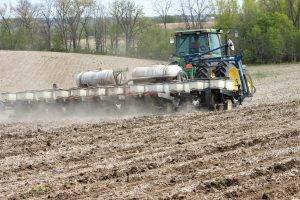 As prices have dropped over the last two months, farmers are second guessing planting intentions. They are looking to cut costs, and often times cost cutting starts at cutting seed costs. Keeping the hybrids with top yield and proven performance versus picking up a cheaper option is key to end-of-year profit. Cheap seed options can be older genetics, poor performing genetics or even discontinued genetics reaching the end of their life and viability.
As prices have dropped over the last two months, farmers are second guessing planting intentions. They are looking to cut costs, and often times cost cutting starts at cutting seed costs. Keeping the hybrids with top yield and proven performance versus picking up a cheaper option is key to end-of-year profit. Cheap seed options can be older genetics, poor performing genetics or even discontinued genetics reaching the end of their life and viability.
It doesn’t take much to make up for inferior genetics as in perceived seed savings. Cutting $50 a bag is only saving $20 an acre, or roughly seven bushels. One cost savings that may be applicable to North Dakota farmers would be changing from a VT2 PRO to a Roundup Ready 2 trait. Keep the genetic that performs on that particular field and save the difference in trait costs. However, It may require more attention to pests throughout the growing season and an additional cost of an aerial application with insecticide. Check with your Latham® dealer on availability and your agronomist about the rising potential for future pest issues in your area.
Farmers can add fertility after the crop is established. They can also add weed control after the crop. However, there’s only once chance to place the right seed on the right acre. Seed is truly the foundation for every successful crop. Why limit net farm profitability from the onset?

Join us this morning as we discuss the final “R” in our nitrogen application series! #AskTheAgronomist
https://www.facebook.com/LathamSeeds/videos/320955165207264?sfns=mo
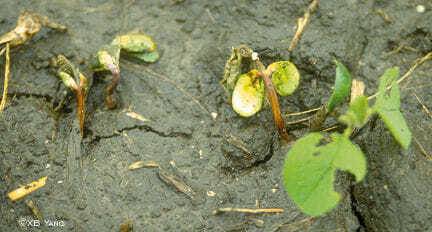
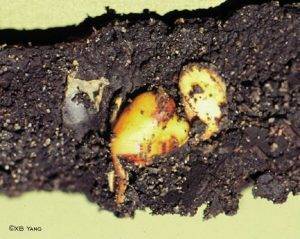 Rotting of soybean stem and root tissue, or “damping off,” can jeopardize stand quality and reduce yield. The Phytophthora fungi can impact seedlings both before and after emergence. Even if seedlings successfully emerge above the soil, they will have poor vigor and slow early growth.
Rotting of soybean stem and root tissue, or “damping off,” can jeopardize stand quality and reduce yield. The Phytophthora fungi can impact seedlings both before and after emergence. Even if seedlings successfully emerge above the soil, they will have poor vigor and slow early growth.
Poor stand is one of the primary consequences of damping off, though replanting may be possible. North Dakota State University research cites that Phytophthora-related yield loss has reached up to 30% in states throughout the Midwest.
Cool weather is a major cause of damping off as it slows germination and stifles growth. Phytophthora thrives in soil temperatures between 70 and 77°F but can also survive in extremely cold temperatures. Warm temperatures, poor drainage and/or clay soils create a susceptible environment for damping off.
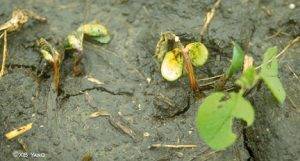 Before seedlings emerge, the fungi can cause seeds to rot. Rotten seeds will appear to be caked in soil with discolored roots. Roots may not be fully developed or even exist.
Before seedlings emerge, the fungi can cause seeds to rot. Rotten seeds will appear to be caked in soil with discolored roots. Roots may not be fully developed or even exist.
Wilting can occur in emerged seedlings as the cotyledons will appear brown and saturated. Plants that developed leaves before showing signs of damping off will begin to turn a grayish color before turning brown.
Damping off can sometimes be confused with herbicide injury. Whereas fields impacted by herbicide injury will have uniform damage, damping off will create inconsistent patches of impacted crops.
With the overwintering nature of the Phytophthora fungi, controlling the amount of field residue can make the environment less conducive for fungal growth. Also, when planting early or in fields with poor drainage consider using fungicide seed treatments to protect seedlings.
Varieties equipped with genes resistant to Phytophthora will protect plants after they emerge and later in the season as well. Contact your local Latham® representative to determine which varieties will work best for your needs.
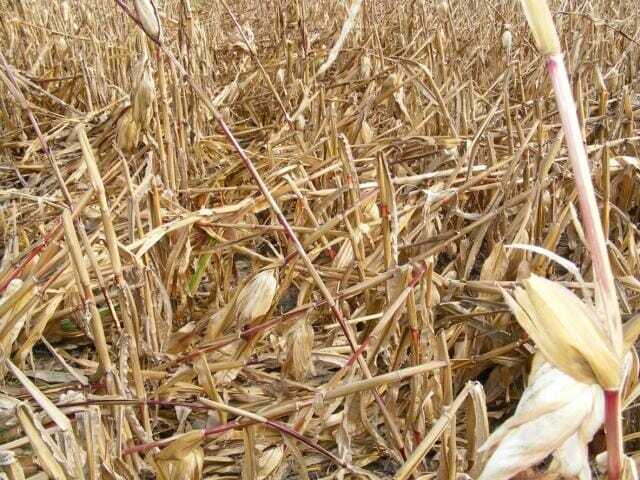
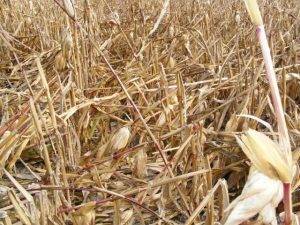
Stalk lodging can lead to reduced yield and grain quality. Lodging refers to the breakage of the stalk below the ear and is often connected with stalk rots, soil-borne pathogens and other environmental stressors that occur after pollination.
Carbohydrate demand during grain fill is the primary driver of stalk lodging. When carbohydrate reserves in corn leaves are depleted during ear development, the plant will begin sourcing the macronutrient from stalks and roots. Environmental stresses can feed into this cycle. For example, warm weather and high temperatures increase plant growth which can lead to high demand for carbohydrates.
While energy demand during grain fill is the primary cause of lodging, fungal pathogens can reduce stalk vigor. Stalk rot pathogens can also weaken stalks and are another major cause of lodging. Generally, if more than 10 to 15% of stalks exhibit rotting, stalk lodging is likely to be a significant problem.
As it relates to weather, high winds and heavy rainfall can also cause stalks to become physiologically weak and eventually lodge. Injuries from hail or frost damage, or insect feeding that creates lesions on leaves, can reduce the amount of energy created by plants. This leads to a higher use of stalk carbohydrate reserves.
Nutrient deficiencies are also a major cause of stalk lodging. Excess nitrogen and low levels of potassium have been associated with reduced stalk quality. Maintaining sufficient potassium levels in corn is especially important as it is the building block for leaf and stalk tissue.
When scouting for stalk lodging, choose ten consecutive plants across ten different areas of the field. Check for signs of lodging by pinching the stalk at the first or second internode above the ground, or by pushing the plant over 8 to 12 inches at ear level. If the plant fails to stay standing upon exerting force, it is considered lodged.
Adjust your harvest plan to harvest lodged corn first before lodging becomes more widespread. Selecting the right corn hybrid for your farm can mitigate issues with insect feeding that would otherwise reduce stalk quality. The level of resistance to stalk lodging among hybrids is highly variant and some have genetically stronger stalks than others. Be sure to consult with your local Latham representative to determine the best management strategy for stalk lodging.
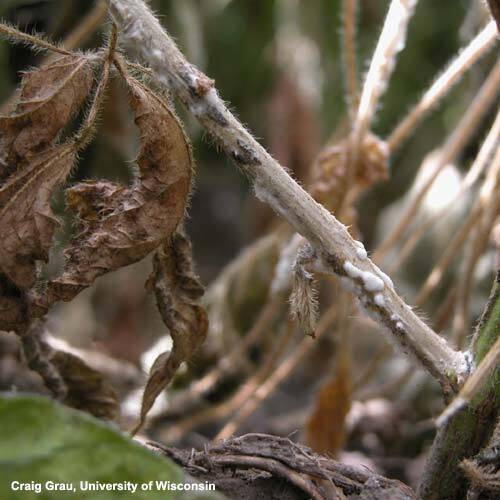
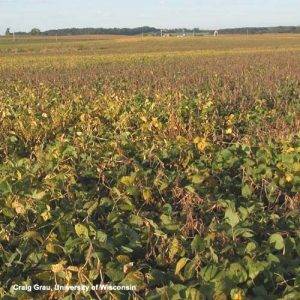
Sclerotinia stem rot – also known as White Mold –can lead to significant yield loss in soybeans. Yield loss from white mold is attributed to the damage it causes to leaves, pods and stems. Research from the University of Wisconsin estimates the disease has costed growers in the U.S. and Canada 101 million bushels of soybeans – equal to $1.2 billion.
White mold is caused by the fungus Sclerotinia sclerotiorum and overwinters in the soil for a number of years. After the fungus emerges from the soil, mushroom shaped structures known as apothecia will form on the soil surface. The apothecia, ranging between ¼ and ½ an inch wide, will first infect through soybean flowers before it reaches the stem.
While the fungus primarily spreads through the air via spores, moisture is required for infection to take place. As a result, cool and wet weather along with high humidity are the main causes of white mold.
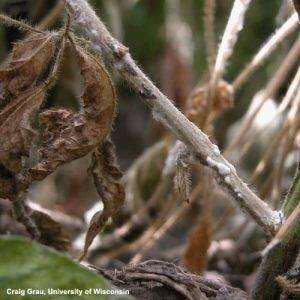
While Sclerotinia sclerotiorum is often confused with other fungal pathogens, the sclerotia distinguishes white mold from other look-alike diseases. Symptoms of white mold will be most prevalent between R3 and R6. Infected plants will exhibit white fuzzy growth on the lower stem.
Soybean blossoms are the first area of the plant to exhibit signs of infection and neighboring stems and pods may appear water-saturated. After infecting blossoms and pods, white mold may eventually spread through the entire stem causing it to turn tan or bleached of color. As the mold growth becomes thicker, black spots will begin to surface throughout the fuzzy white surface.
White mold also creates foliar symptoms, causing leaves to completely die while still attached to the stem. In infected soybeans, the tissue area between the leaf veins will turn gray and cause leaves to become wilted and curled.
Due to the overwintering nature of the sclerotia, a two to three-year rotation away from soybeans is advised. When it comes to genetics, some soybean varieties are more resistant to white mold than others. Varieties with resistance to the fungus may recover better than others. It is also important to consider planting practices that cause white mold growth. Shade created from high plant density and growing canopies can lead to the fungal disease. Increasing row width and reducing planting populations are the best methods to improve airflow through the canopy and reduce infection from white mold.
In addition, broadleaf weeds are notorious for hosting white mold and herbicides should be used to control weeds. Fungicides are a viable method for treating white mold and can reduce the negative impacts incurred by soybeans. However, they are most effective when applied just before infection takes place. Be sure to consult with your local Latham representative to determine the best treatment plan for white mold.
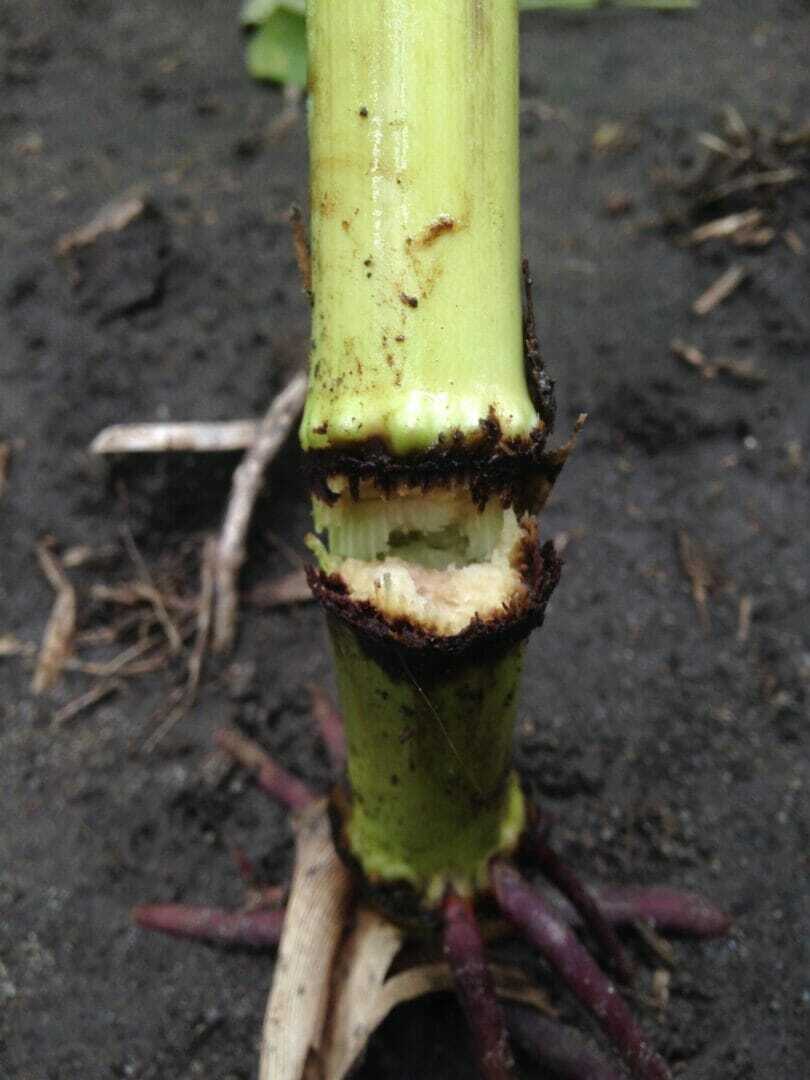
There are a variety of stalk rots that infect corn, causing extensive damage to crops and losses in yield. Common factors make corn susceptible to stalk rot including warm and wet weather, stress after pollination, fertility issues, stalk boring insects, and the presence of other foliar diseases. There are key signs, symptoms and differences that distinguish the different types of stalk rot.
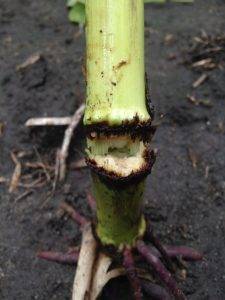
Physoderma stalk rot is caused by the pathogen Physoderma maydis, the same fungus responsible for causing Physoderma brown spot. The fungal disease seems to be showing up in more and more corn fields each year, but typically shows up on random plants and and has minimal impact on yield. Like most stalk rot diseases, warm and wet weather favor the development of Physoderma stalk rot.
Physoderma stalk rot infects corn between the V4 and V9 stages. The disease is not associated with any foliar signs, so it is important to inspect plants closely at the base. Dark brown or black lesions will appear at the base of the stalk, and rotting of the pith will be observed upon splitting the stalk open. Overtime, blackening of the pith will move to higher nodes. Sporangia can also be found on the outside of nodes and within the rotted pith tissue.
Scout for symptoms of Physoderma stalk rot across five areas of the field. Stalks will make a distint “pop” and snap at one of the first 3 nodes above the soil line. If more than 10 to 15% of plants exhibit stalk rot, the field should be harvested early.
With this being a newer disease we are still learning differences in hybrid tolerances to both stalk and foliar phases of this disease.
As a majority of stalk rots overwinter, one to two-year rotation away from corn and controlling corn residue are key for preventing the return of the disease. Fungicides may also be applied to prevent Physoderma leaf blight , but these studies are in early phases as well given the novel nature of this diesease